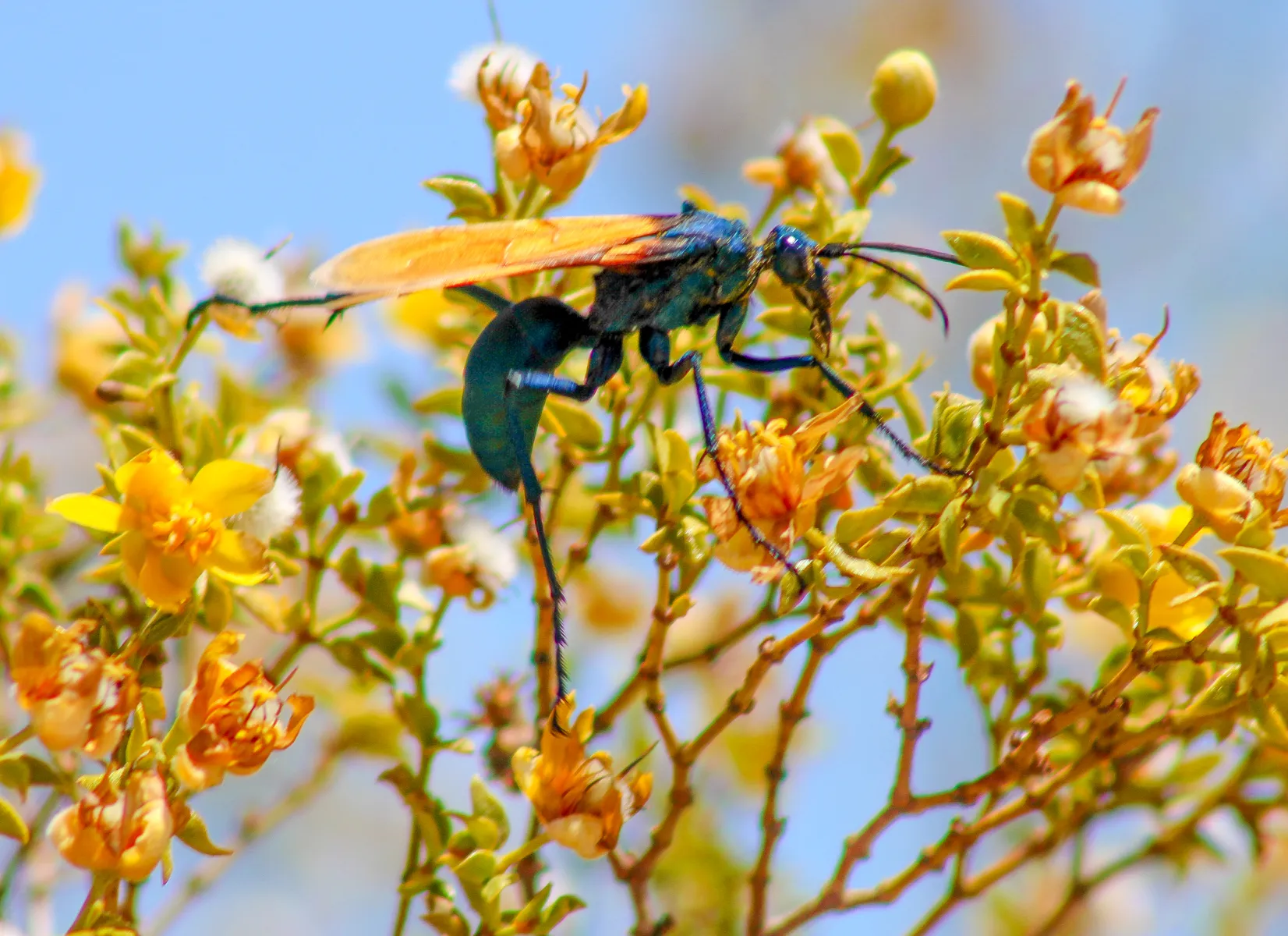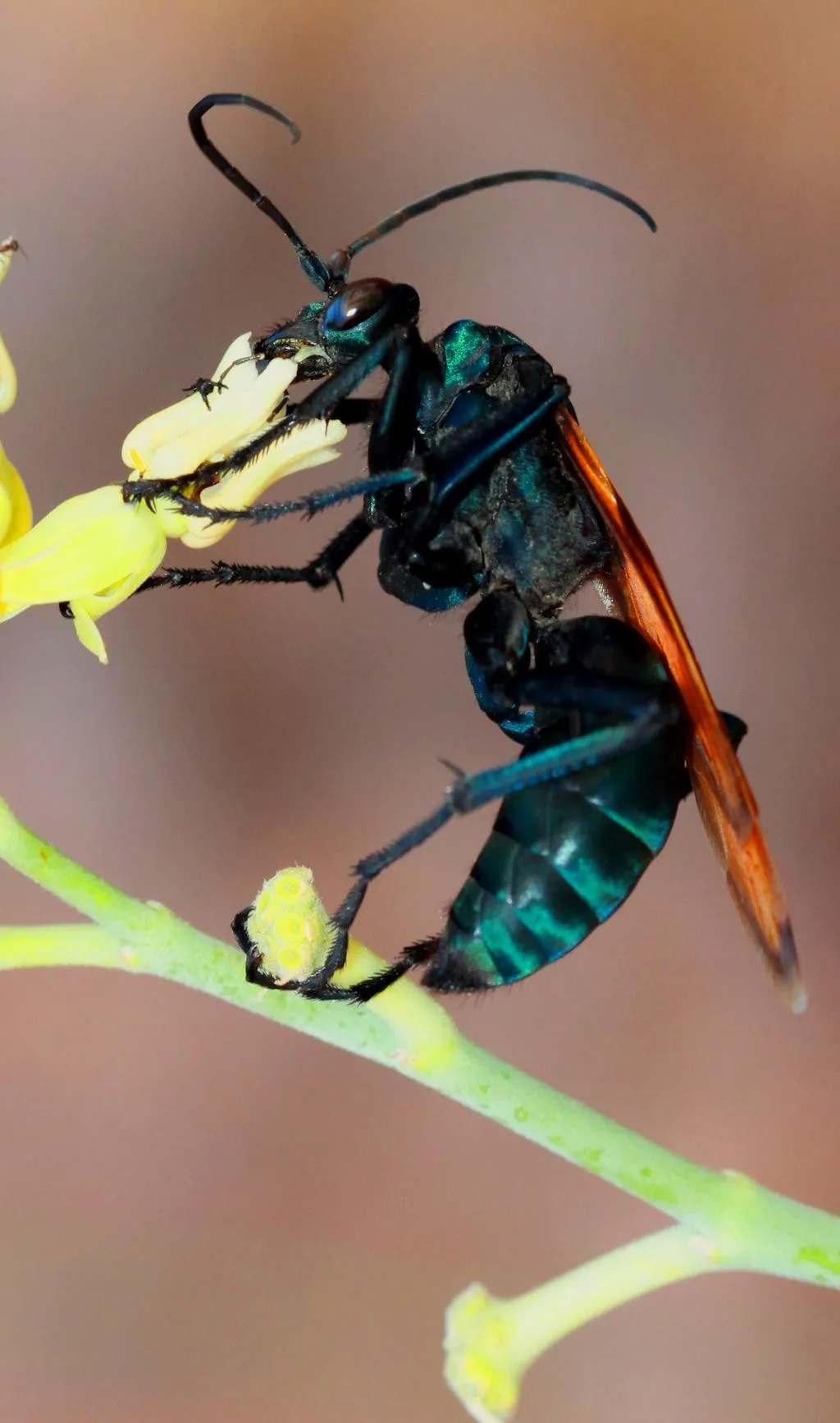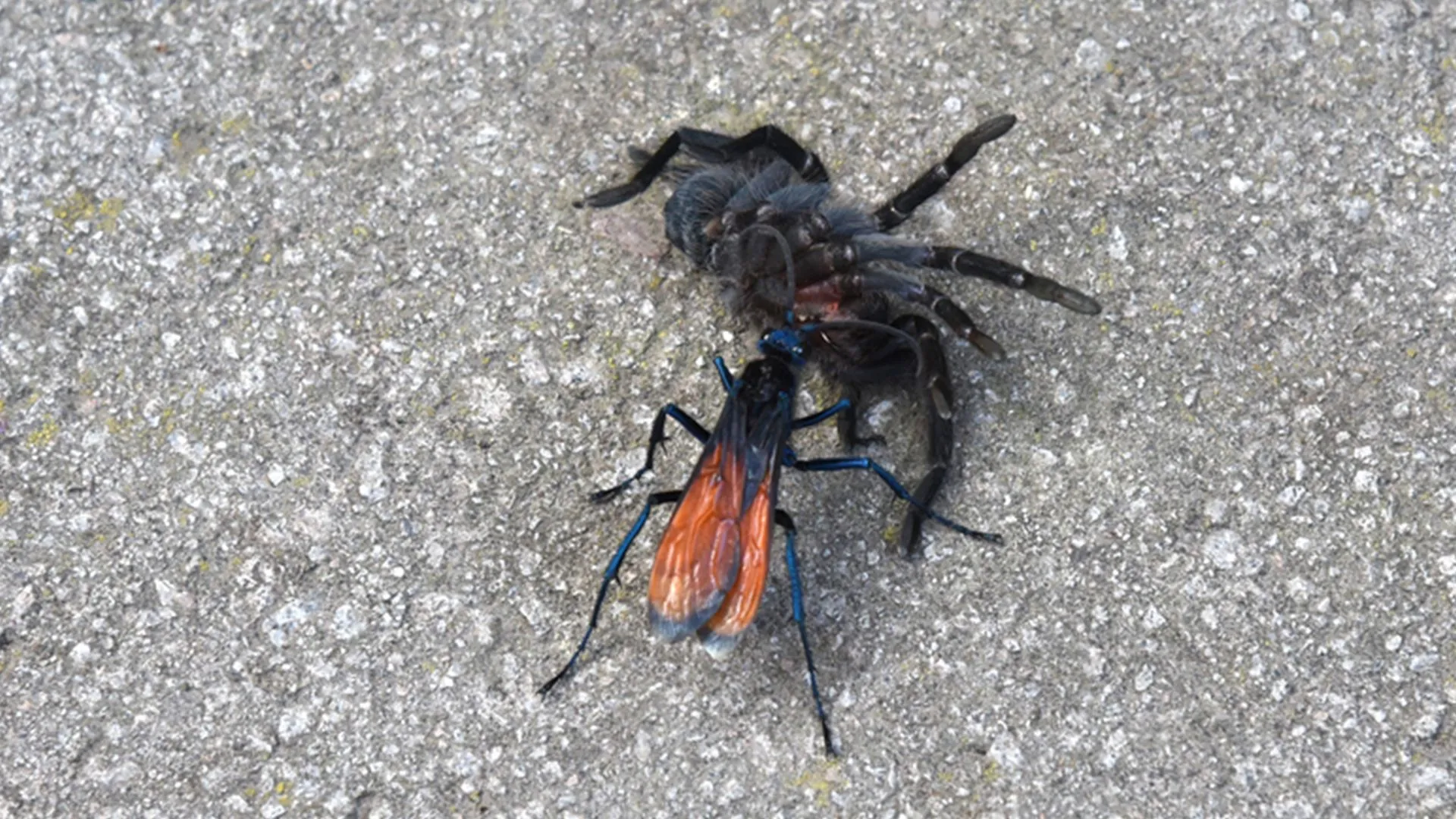What is the Tarantula Hawk Wasp (Hymenoptera)
The tarantula hawk wasp is a large, solitary wasp belonging to the family Pompilidae. These impressive insects are known for their striking appearance, potent sting, and unique hunting behavior. They are among the largest wasps in the world and are easily recognizable due to their vibrant colors and large size. The tarantula hawk wasp is a fascinating creature that plays a vital role in its ecosystem. Their behaviors and life cycle is very interesting to study. The colors are also quite unique and attractive, they often have a mix of black and vibrant orange or blue colors. The wasp’s body is built for power and endurance, perfectly suited to its lifestyle.
What is the scientific name of Tarantula Hawk Wasp?
The scientific name for tarantula hawk wasps varies depending on the specific species, but the most commonly known and studied species in North America belong to the genus Pepsis and Hemipepsis. Therefore, the scientific name can be Pepsis grossa or Hemipepsis ustulata . These names are essential for scientists and researchers to accurately identify, study, and communicate about these wasps. The use of the scientific name ensures clarity and avoids confusion with common names, which can vary by region or language. Knowing the scientific name is key to understanding the specific characteristics and behaviors of the species.
Where are Tarantula Hawks Found?

Tarantula hawk wasps are primarily found in the Americas. They are commonly found in the southwestern United States, particularly in arid and semi-arid regions like the deserts of Arizona, New Mexico, and California. They are also present in parts of South America. These regions provide the warm climates and specific habitats that the wasps need to thrive. Within these areas, they often inhabit deserts, scrublands, and areas with a sandy or loamy soil suitable for nesting. The wasps are adapted to these environments and play an important role in their ecosystems, particularly as predators of tarantulas.
What Do Tarantula Hawks Eat?
Adult tarantula hawks feed primarily on nectar from flowers. They use their long tongues to drink nectar, which provides them with the energy they need. The larvae, however, have a much more dramatic diet. The female tarantula hawk wasps hunt tarantulas, which they paralyze with their sting. Once the tarantula is immobilized, the wasp drags it to a burrow or nest. The wasp then lays a single egg on the tarantula’s abdomen. When the egg hatches, the larva feeds on the paralyzed tarantula, eventually consuming it entirely. This unique feeding behavior is what makes tarantula hawks such a fascinating and feared insect.
Tarantula Hawk Venom and Sting (Pain Index)
The tarantula hawk wasp is infamous for its incredibly painful sting. The venom itself is not particularly toxic, but the sting’s effect is described as excruciating. The pain has been rated as one of the most painful insect stings in the world, often rated at a 4 on the Schmidt sting pain index, which is the highest rating. The pain is immediate and intense, described as a searing sensation that can last for several minutes. Fortunately, the sting is not usually life-threatening to humans, but the pain can be debilitating. The venom is designed to paralyze tarantulas, not to cause lasting harm to humans. The pain is a defense mechanism.
What is the Tarantula Hawk Wasp Life Cycle?

The tarantula hawk wasp life cycle is fascinating and starts with the female wasp hunting a tarantula. After paralyzing the tarantula, she drags it to a pre-made nest or a burrow. She then lays a single egg on the tarantula’s abdomen. When the egg hatches, the larva begins to feed on the paralyzed tarantula. The larva grows, molting several times as it consumes its host from the outside in. Once the tarantula is completely consumed, the larva pupates within the tarantula’s exoskeleton. It remains in this pupal stage through the winter. The adult wasp emerges from the pupa, ready to mate and begin the cycle again.
How to Avoid a Tarantula Hawk Sting
While the tarantula hawk wasp’s sting is notorious, it’s also a rare occurrence. These wasps are generally not aggressive towards humans and will only sting if they feel threatened or are handled roughly. The best way to avoid a sting is to leave them alone and avoid provoking them. If you encounter a tarantula hawk, keep a safe distance and do not try to catch or touch it. Wear protective clothing, such as long sleeves and pants, when working or hiking in areas where they are known to be present. Be aware of your surroundings and take precautions if you see a wasp near a tarantula or its burrow. By respecting their space, you can minimize the risk of a painful encounter.
The Benefits of Tarantula Hawks
Despite their intimidating nature and painful sting, tarantula hawks offer several benefits to the ecosystem. They are natural predators of tarantulas, which helps control tarantula populations. They also play a role in pollination, as they feed on nectar. Tarantula hawks are a vital part of their environment and are a testament to nature’s balance. Their presence supports a healthy ecosystem. The wasps are also an example of the many intricate relationships that exist in the natural world. Their survival is a sign of the health of the environment they live in.
